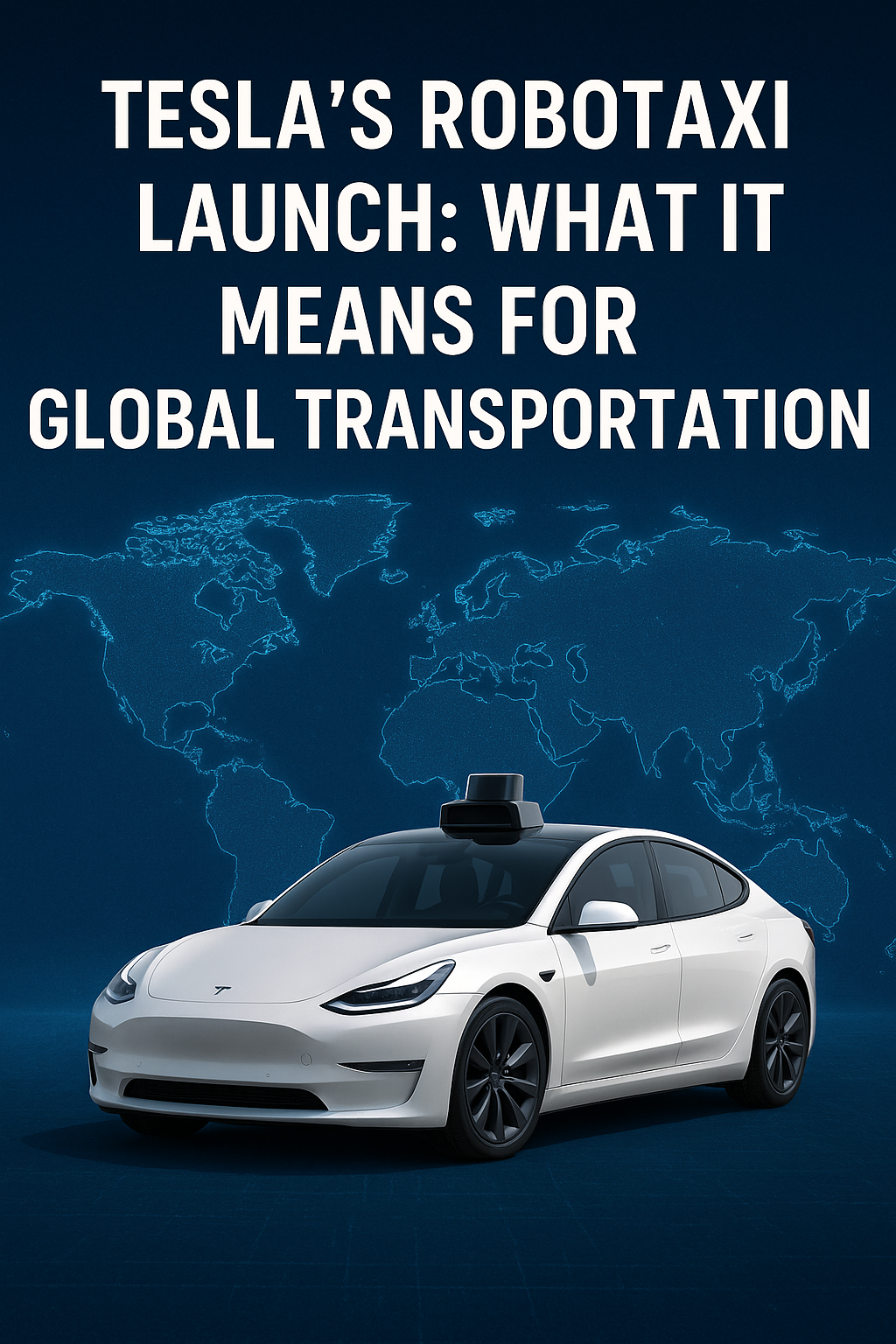Tesla has always been at the forefront of innovation in the electric vehicle (EV) industry, but its recent Robotaxi launch marks a turning point not only for the company but also for global transportation as a whole. With Elon Musk’s ambitious vision, Tesla’s entry into the autonomous ride-hailing market signals a shift towards a fully automated, sustainable, and cost-efficient mobility ecosystem. This article explores what Tesla’s Robotaxi means for the world, its potential impact on transportation systems, and the challenges ahead.
The Concept of Tesla’s Robotaxi
A Robotaxi is essentially a self-driving taxi service powered by Tesla’s advanced Full Self-Driving (FSD) technology. Instead of owning a personal car, users can summon an autonomous Tesla vehicle through an app, similar to Uber or Lyft, but without the need for a human driver. This service aims to make transportation safer, more affordable, and environmentally friendly while reducing reliance on traditional car ownership.
Tesla’s plan goes beyond just ride-hailing. Owners of Tesla vehicles equipped with FSD could potentially enroll their cars in the Robotaxi network, allowing their vehicles to generate income when not in use. This innovative business model creates opportunities for passive earnings while reshaping how people view car ownership.
Global Transportation Implications
- Reduced Transportation Costs
One of the most significant impacts of Robotaxis will be the dramatic reduction in travel costs. Without drivers, labor costs vanish, making fares cheaper compared to traditional ride-hailing services. Tesla claims that Robotaxi rides could be far less expensive than owning a car or using public transport. - Decreased Car Ownership
With affordable and accessible autonomous ride-hailing, the need to own a personal car may decline. In urban areas, where parking and maintenance costs are high, people may find it more convenient to rely solely on Robotaxis. - Sustainability and Lower Emissions
Since Tesla’s fleet is fully electric, widespread adoption of Robotaxis could significantly reduce carbon emissions. This supports global sustainability goals and accelerates the transition from fossil-fuel-powered vehicles. - Enhanced Safety
Human error is responsible for over 90% of road accidents worldwide. By replacing human drivers with advanced AI-driven systems, Tesla’s Robotaxi has the potential to drastically improve road safety, reduce fatalities, and minimize collisions. - Urban Planning and Infrastructure Changes
A shift towards autonomous ride-hailing could reshape cities. Parking demand may decline, freeing up valuable urban space for green areas or housing. Road usage may also become more efficient due to optimized AI traffic management.
Economic and Social Impact
- Job Market Disruption: While Robotaxis promise efficiency, they also raise concerns about job losses in the ride-hailing and trucking industries. Millions of drivers worldwide may face unemployment as autonomous vehicles replace human labor.
- New Economic Models: Tesla’s network could create new income opportunities for car owners who list their vehicles as Robotaxis. This may change how individuals perceive cars—from being liabilities to income-generating assets.
- Accessibility: Autonomous ride-hailing could provide affordable mobility solutions for people who cannot drive, such as the elderly or disabled, thereby improving inclusivity in transportation.
Challenges Tesla Faces
- Regulatory Barriers
Governments worldwide have varying policies on autonomous driving. Some countries may embrace Tesla’s Robotaxi quickly, while others may impose strict regulations, slowing down global adoption. - Public Trust and Safety Concerns
While Tesla’s FSD is advanced, public skepticism remains. Gaining trust in autonomous technology is crucial for widespread adoption. - Competition
Tesla isn’t alone in the race. Companies like Waymo, Cruise, and Uber are also investing heavily in autonomous ride-hailing. Tesla will need to maintain technological superiority to stay ahead. - Technological Hurdles
Achieving full autonomy is one of the most challenging problems in AI. Despite progress, Tesla’s FSD still requires refinements to handle complex real-world scenarios like unpredictable pedestrians, poor weather, and unusual road conditions.
The Future of Global Transportation with Robotaxis
If Tesla successfully scales its Robotaxi fleet, the future of global transportation could change in the following ways:
- Smart Cities Integration: Robotaxis could integrate with smart city infrastructure, optimizing routes, reducing congestion, and improving efficiency.
- Subscription-Based Mobility: Instead of car ownership, consumers may shift to subscription-based mobility services, paying monthly fees for unlimited Robotaxi rides.
- Decentralized Mobility Networks: Tesla’s approach allows individuals to contribute their vehicles, creating a decentralized transportation system that competes with traditional fleets.
Conclusion
Tesla’s Robotaxi launch is not just about another product release—it is about reimagining how the world moves. By combining electric vehicles, AI-driven autonomy, and a decentralized ownership model, Tesla is setting the stage for a transportation revolution. While challenges remain in terms of regulation, technology, and public trust, the potential benefits—lower costs, safer roads, and sustainable cities—are too significant to ignore.
If successful, Tesla’s Robotaxi could mark the beginning of a new era, where transportation is no longer about owning cars but accessing safe, affordable, and eco-friendly mobility at the tap of a button.
